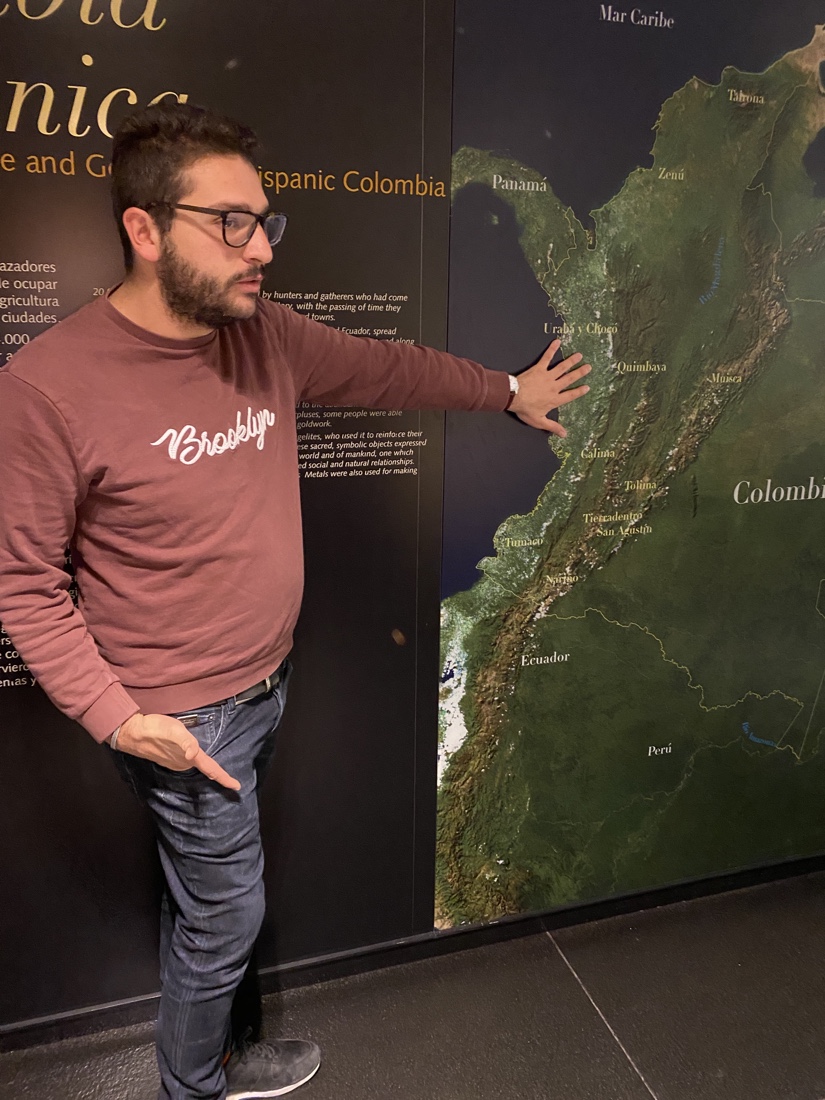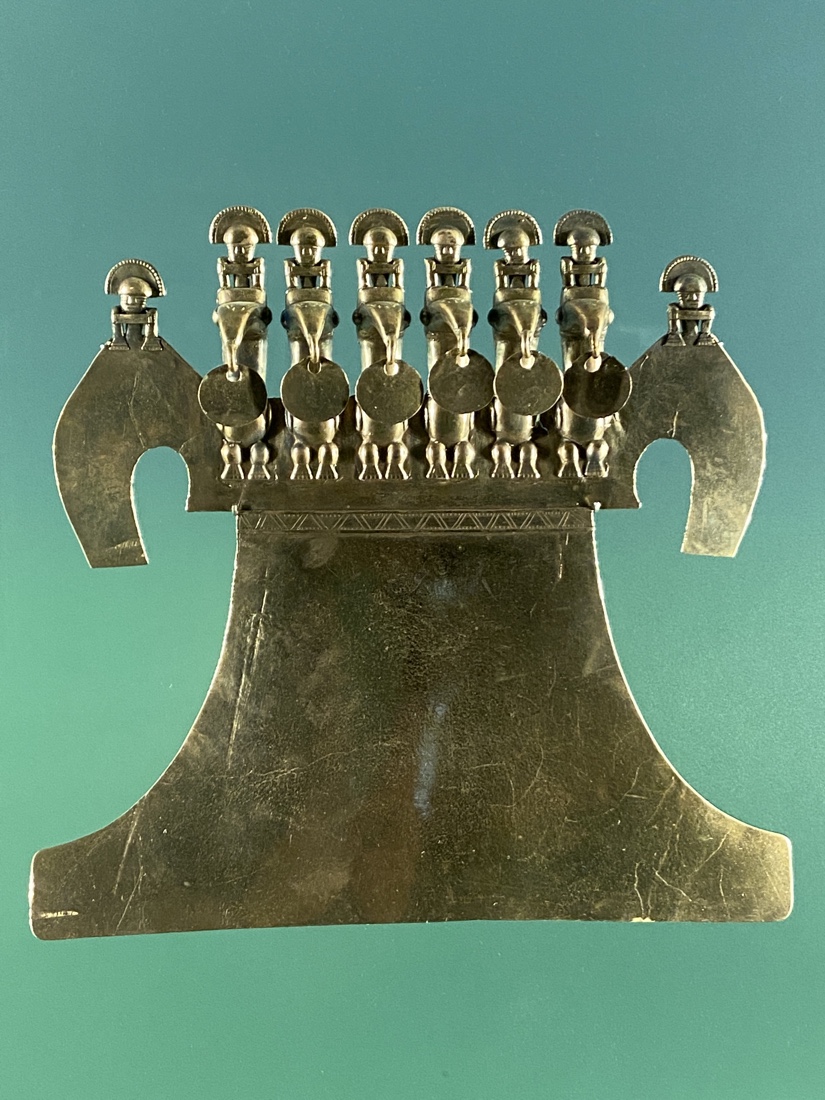February 1. Bogota, the capital of Colombia, is one of the 25 largest cities in the world, with a population of some 11 million in the metro area. Founded in 1538, Bogota boasts the third highest altitude of any big city in South America, 8800 feet, and the average temperature is around 58 degrees Fahrenheit.
The political, international, and culinary hub of Colombia, Bogota offers highlights both from the past and the present. A modern and metropolitan city, it features soaring churches, a Bohemian arts scene, high-end shopping, and views from the cliffs above the city.
Bogotá has many distinct neighborhoods, the wealthiest and most famous is called “Chapinero.” In comparison with other major interior cities like Medellín, Bogotá is sprawling and flat. Inhabitants are generally considered to be “cold” in comparison to people from other regions, but in reality are quite kind and helpful. Their accent is noted for being sing-songy and the cadence often finishes high as if residents were asking questions.
Bogotá remains the center of politics and development. It is the base for several multinational companies in Colombia and more than 1,400 multinationals have offices in the city. Tourism is also important as almost 60% of tourism to Colombia arrives to Bogotá.
In the morning, we have a buffet breakfast at our hotel and then are met by Brian and our guide Nico (Nicolaś). We are driven to the famous Gold Museum (Museo de Oro). Full of thousands of spectacular gold art works, the museum displays artistry and crafts created by the indigenous peoples of the Andes mountains, with some pieces dating back thousands of years and pre-dating the creation of modern metalwork tools. It is a truly fabulous and rather overwhelming museum, and Nico is an extremely knowledgeable guide. The few photos below do not begin to do justice to the museum, where we happily spend over two hours. 





 Nico, with Brian’s participation, helps us to understand both where the pieces come from, what they wee used for and how they were made, as well as how all of the tribes fit together. Colombia has one of the highest quantity of indigenous tribes in the world, all of whom were influenced by Colombia’s mega-diversity in geography, flora and fauna.
Nico, with Brian’s participation, helps us to understand both where the pieces come from, what they wee used for and how they were made, as well as how all of the tribes fit together. Colombia has one of the highest quantity of indigenous tribes in the world, all of whom were influenced by Colombia’s mega-diversity in geography, flora and fauna.
At the Museum restaurant we have a very tasty lunch. I have ajiaco, a chicken-based stew broth made famous in Colombia’s capital city which is quite excellent.
We are picked up and head to the neighborhood of Candelaria, home to some of Bogota’s most famous universities and the city’s most popular walking streets. We pass by modern buildings nestled against colorful and detailed street-art murals, leading to some of Bogota’s oldest neighborhoods where original colonial houses still stand.
We continue walking past a variety of architectural styles as we come to Plaza Bolívar, the civic heart of the country. Here we find the city’s expansive cathedral, local and federal governments, all nestled against the presidential palace, La Casa de Nariño. We learn about Colombia’s political structures and beliefs from Nico, who speaks very candidly about the country’s recent political history. Nico has degrees in history an in national monuments, and lived for two years in Canada. Brian says he is one of the top guides in Bogotá, and I believe it, though he can use considerable help in simplifying and organizing, so as to make his descriptions more understandable.
Here are a few street scenes, including some of the amazing murals.






We finish our day by taking the funicular up to the famous viewpoint of Monserrate, which features some of the finest views of Bogotá. As the sun begins to set, we see the city spread out before us and see the massive expanse of forest and peaks of the eastern Andes mountains behind us. We stop for a drink at the top, now 9600 feet high. Walking is hard on the legs and feet, not to mention on breathing. Pictured below is a poor fellow who appears to have needed a great deal of help on the climb.

Dinner tonight with Brian is at Osaka Nikkei, Japanese, Peruvian, and Colombian fusion wrapped into an incredible and delicious dining experience. This is good training for Carol and me for our upcoming April trip to Japan (minus the Peruvian and Colombian fusion).

An ambitious beginning! Interesting
sites, impressive climbs, and very tempting
eats, to keep you energized.Look forward to
hearing more.
Arnie – you and Carol are, as usual, off to a great beginning on yet another trip. The initial background piece on Columbia was neither dry nor boring, particularly for those of us who have never been there; have only the most general impressions of the recent history of the country; and an even cloudier sense of its more distant history.
The images that you included from the Gold Museum were dazzling – any museum in the world would have been delighted to have them. Your history with Brian, including the shared Brandeis connection, is quite extraordinary and should contribute significantly to making this another very memorable experience.
Your friends all look forward to following your further posts over the next week, and, at least for me, vivid pictures and thoughtful commentary from the tropics are always welcome in the midst of a Hudson Valley winter!
Best wishes to you and Carol for a wonderful time in Columbia, and thank you for allowing us all to experience a small part of it with you.
Best.
Jan
Have a wonderful trip. Sorry to hear about Carols fall.
Please tell Brian hello.
Sounds like a very full and interesting day! I’m so glad you have awesome guides:) I know that makes a huge difference in the enjoyment of a trip, because they help you understand and appreciate the culture.
L,
PRskie
I’m just now reading through the Columbia blogs. I LOVE the pictures with the murals! Amazing!!